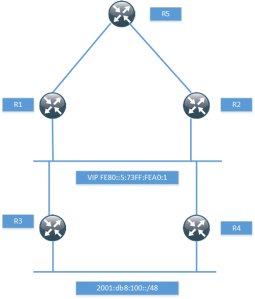Archive
IPv6 operation and best practices – documents to read
Unfortunately I don’t get to do much v6 at my job yet but I still like to stay updated on
what is happening. Do you run any v6 in your network? If so, do you run it native or tunneled
or something like 6PE?
Here are some interesting sources for operation of v6.
draft-matthews-v6ops-design-guidelines-01
This document discusses if IPv4 and IPv6 traffic
should be mixed on the same interface or should different interfaces be used? Should
link local or global addressing be used for routing? Should v6 routes be transferred
over v4 in BGP sessions?
draft-ietf-v6ops-enterprise-incremental-ipv6-01
This document is for deploying v6 in an enterprise network. Things like security policy,
addressing plan and IPv6 myths are brought up.
This document is purely about the advantages and disadvantages of only running link local
addresses.
Also, don’t miss out on information that is freely available at Cisco Live. Here are
some interesting sessions on IPv6 from Melbourne.
BRKRST-2301 – Enterprise IPv6 Deployment (2013 Melbourne)
BRKRST-1069 – Understanding IPv6 (2013 Melbourne)
ITMGEN-1313 – Preparing for IPv6 in the Enterprise (2013 Melbourne)
BRKRST-2311 – IPv6 Planning, Deployment and Troubleshooting (2013 Melbourne)
BRKSEC-2003 – IPv6 Security Threats and Mitigations (2013 Melbourne)
COCRST-2464 – Inside Cisco IT: Making The Leap To IPv6 (2013 Melbourne)
As you can see. IPv6 is a pretty big deal these days at Cisco Live. Then you also have
books, configuration guides etc but this should give you a good start to see what challenges
and considerations you should have when deploying IPv6.
